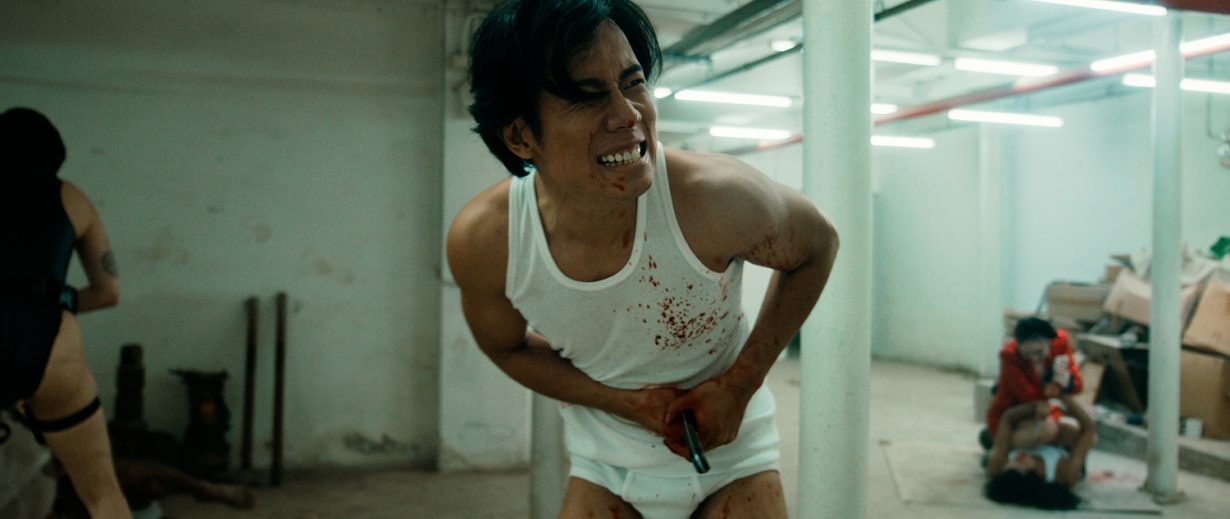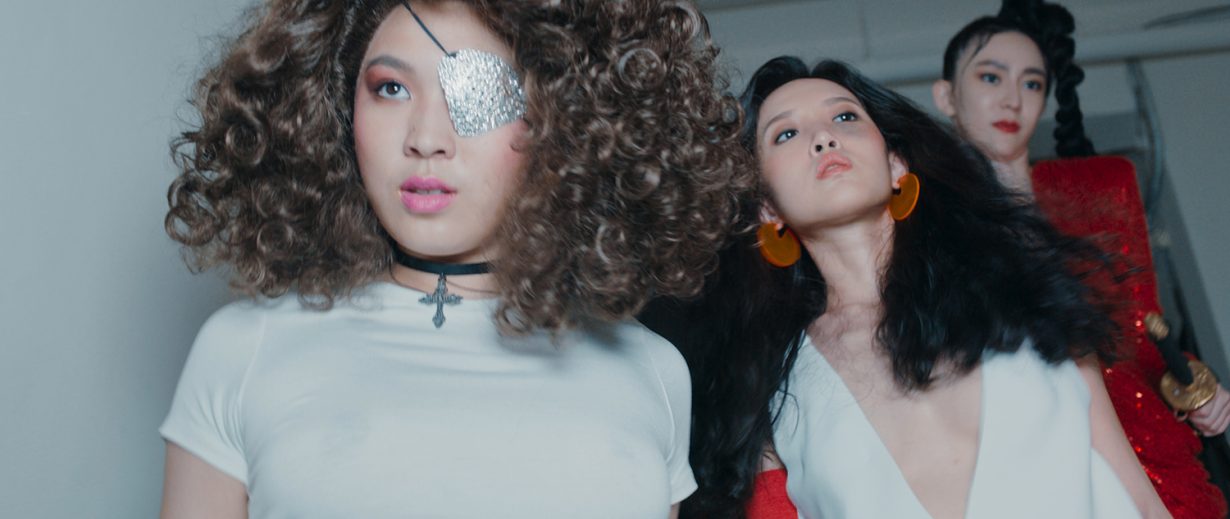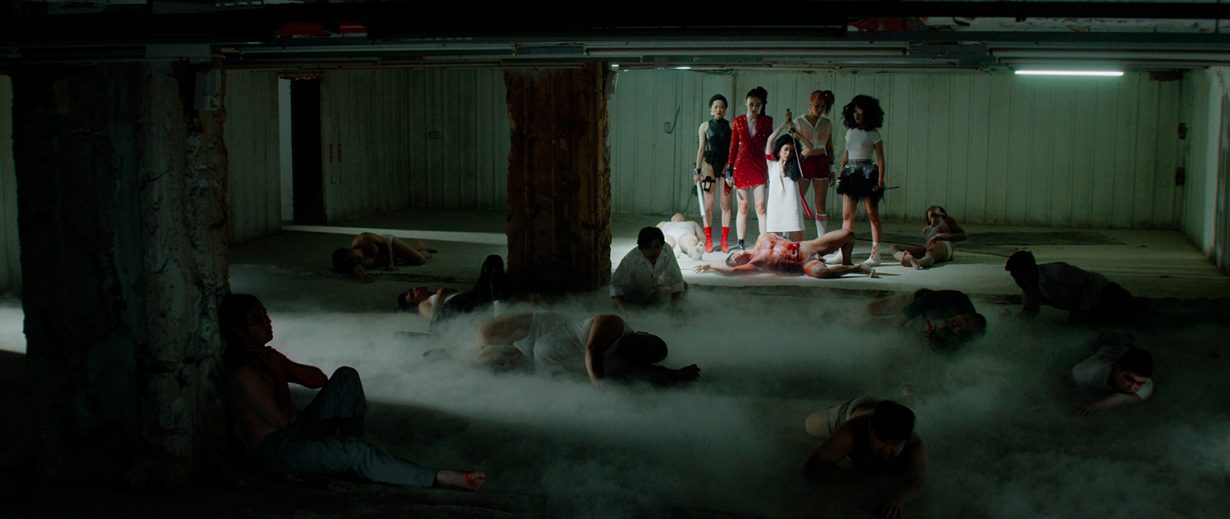‘A memory that’s impossible to recall’: the Taiwanese filmmaker’s nightmarish apparitions challenge the erasures of the past
Su Hui-Yu’s work has the disorienting appeal of a hazy dream. Droning sound, lo-fi instrumental soundtracks and static compositions lull us into a stupor. We’re awake but not, as if languidly sucked into a memory that’s impossible to recall. I spoke with Su via Skype on a mid-January morning, more than a week before sitting down to write this piece. Exposed, as most of us have been over the past months, to an endless flux of social-media content and virtual events, our conversation itself now manifests to me like a distant memory: an experience that I have to recreate aided by our recorded voices playing again through my earphones.
“I was always fascinated by the experience of watching cable TV at night,” Su Hui-Yu says, discussing his 2012 video installation The Upcoming Show, “and when I tried to recall all the weird programmes I saw, my mind seemed to be covered with mist.” It wasn’t possible to recreate those bizarre programmes that populated the fringes of Taiwan’s television programming during the 1990s, Su remembers, so he decided to rearrange his recollection into a much more personal work. The process of reshaping the artist’s oneiric and mnemonic worlds while making use of archival materials, such as television shows in this instance, anticipates Su’s later works, which explore the forgotten and the forbidden of Taiwan’s cultural history.

The Women’s Revenge (2020) is the second iteration of Su Hui-Yu’s series reshooting the subversive classics of Taiwanese cinema, following the 2018 four-channel video installation The Glamorous Boys of Tang. Originally conceived as a five-channel installation, The Women’s Revenge screened in short-film format at the 2021 International Film Festival Rotterdam – a treatment that was previously applied to The Glamorous Boys of Tang too. This newest work draws inspiration from the so-called Taiwan Black Movies, an exploitative genre that proliferated in the country during the late 1970s and early 80s. Those films reflected the tumultuous social and political atmosphere of the time, when Taiwan was under martial law imposed by the Chinese Nationalist Party (Kuomintang). As sexual violence was rife in those titles, a subgenre of female-avenger films eventually emerged providing inspiration for Su’s latest work. Taiwan’s fierce conservative past is gone, so “now the country is progressive and liberal enough for me to unearth such films and advance a negotiation between opposing political beliefs and gender groups”, offers Su.
As with most of Su Hui-Yu’s recent works, The Women’s Revenge owes a lot to his personal memories. Too young to enjoy those B-movies in the theatre, Su first came into contact with them through their gory posters affixed to the walls of the cheap eateries he frequented as a kid. And yet his involvement with the project doesn’t stop at a passive reenactment of the original material. In a radical move that also investigates the politics of bodily appropriation and consumption via digital technologies, Su stars as one of the women avengers. “Using deepfake technology, I adopted Lu Hsiao-Fen’s face – the star of many 1980s exploitation films – and joined the female squad. As a man, I wanted to experience the world of women and open up the dialogue on gender differences.” There’s a moment in which Su’s inspiration transforms into a vivid and unapologetic manifesto. Carried supine by the other avengers, his character spreads her legs wide open to expose a pair of unzipped panties. But this is no L’Origine du Monde. Rather, where one might expect to see a vagina there is a diamond- shaped miniature screen showing one of the other women tied up by a group of uniformed men. While the camera draws closer and eventually penetrates Su’s body to lead us into a different setting, the artist’s genitalia not only become a canvas on which to project the sole scene of female abuse we witness in the film, they also function as a stark reminder that violence on women is ultimately perpetrated by men.

For the most attentive film connoisseurs, The Women’s Revenge is a treasure trove of cinematic citations. The film’s mise-en-scène is in itself a reference to one of the most iconic settings of Taiwan Black Movies: the slaughterhouse. In The Lady Avenger (1981, directed by Yang Chia-Yun), the film’s heroine murders one of her rapists in the meatpacking factory where he works, and similarly, it’s in the chilling atmosphere of a slaughterhouse that Su Hui-Yu’s female squad slashes through a horde of dishevelled, seminaked men running away in terror. Other tributes hide in the details, like the frozen gesture of holding a knife above a man’s naked body, which recalls the promotional poster for Zhuang Xiang Zeng’s The Woman of Wrath (1984), or the sparkly eye-patch sported by one of the avengers, a reference to Tsai Yang-Ming’s Woman Revenger (1981). However, these artistic citations don’t stop at Taiwanese films. “I cite Western paintings a lot,” cues Su, “mostly because a lot of my personal memories of violence come from Western art history.” References to Artemisia Gentileschi or Caravaggio are evident in a scene featuring a severed male head spurting blood.
The Women’s Revenge is also indebted to East Asian spirituality. In a scene that helps to transition from the punishing space of the slaughterhouse to a world of surrealist images and settings, the men shoulder a humongous frame and oscillate to a thudding music. Within the frame they carry, the same scene is replicated over and over again. “This concentric composition represents a way to hell but, in a Buddhist logic, it’s also a visual representation of karma,” explains Su Hui-Yu. “If life is a circle, then you die and go to a different world. You may come back to life again, but you’ll never escape.” Mirrors represent the ineluctable status of the human condition, but the way these men are positioned and illuminated is, again, peculiarly baroque. “Religion, myths or historical paintings, these are all parts of our collective memory, and I draw from that. West and East are often interconnected in my art, but when I use my personal experiences to create my psychedelic and bizarre dreamlike works, I just wish the audience will be invited by those images, even if they are unfamiliar with Taiwan.”

Within Su Hui-Yu’s ‘reshooting’ series we encounter other items populating the artist’s mnemonic realm. The two-channel installation Super Taboo (2015) materialises, in a bucolic setting, carnal tableaux vivants of entangled naked bodies, evoked by a white-collar employee fervently reading from a pornographic publication – known as xiaoben, ‘small book’. In martial-law-era Taiwan, heterosexual pornographic content was as marginalised and suppressed as homoerotic manifestations in film and theatre. Whereas The Glamorous Boys of Tang exists as a piercing and opulent homage to a 1985 film of the same title directed by Chiu Kang-Chien, a homoerotic fantasy whose most subversive ideas were heavily censored, the beautifully fluid multi- channel installation The White Waters (2020) celebrates playwright Tian Chi-Yuan’s visionary work White Water (1993), a same-sex reinterpretation of the ‘Flooding of Jinshan Temple’ episode from the Chinese classic The Legend of the White Snake. “No matter the original – be it a film, a play or a porn magazine – my mission is to resurface those ideas that couldn’t be expressed because of the censorship of the time and give them new life,” Su concludes. By situating his work in a liminal space, Su Hui-Yu negotiates the erasures of the past with the renewed freedom of expression conceded by present-day Taiwan, hopefully paving the way for even more subversive reinterpretations of the country’s complex history. And when the curtain eventually closes on the nightmarish apparitions of gender violence evoked in The Women’s Revenge, the camera pans to embrace three young high- school students, who are seemingly drawn from the artist’s own memories. Enraptured by a faraway scene, they pant heavily. Their gaze fixed towards the future.
